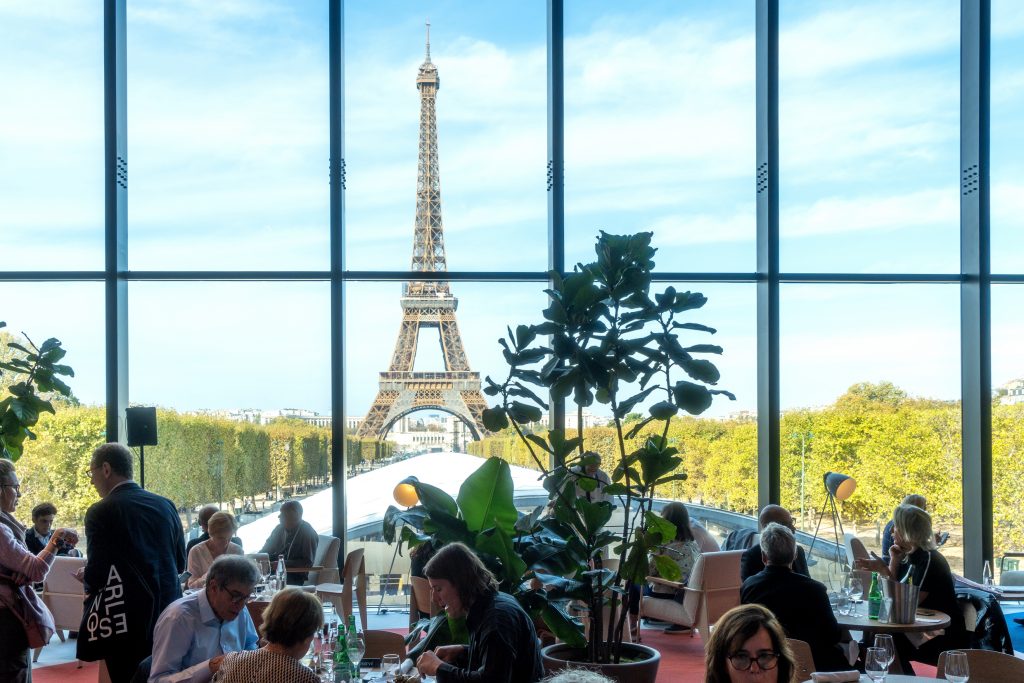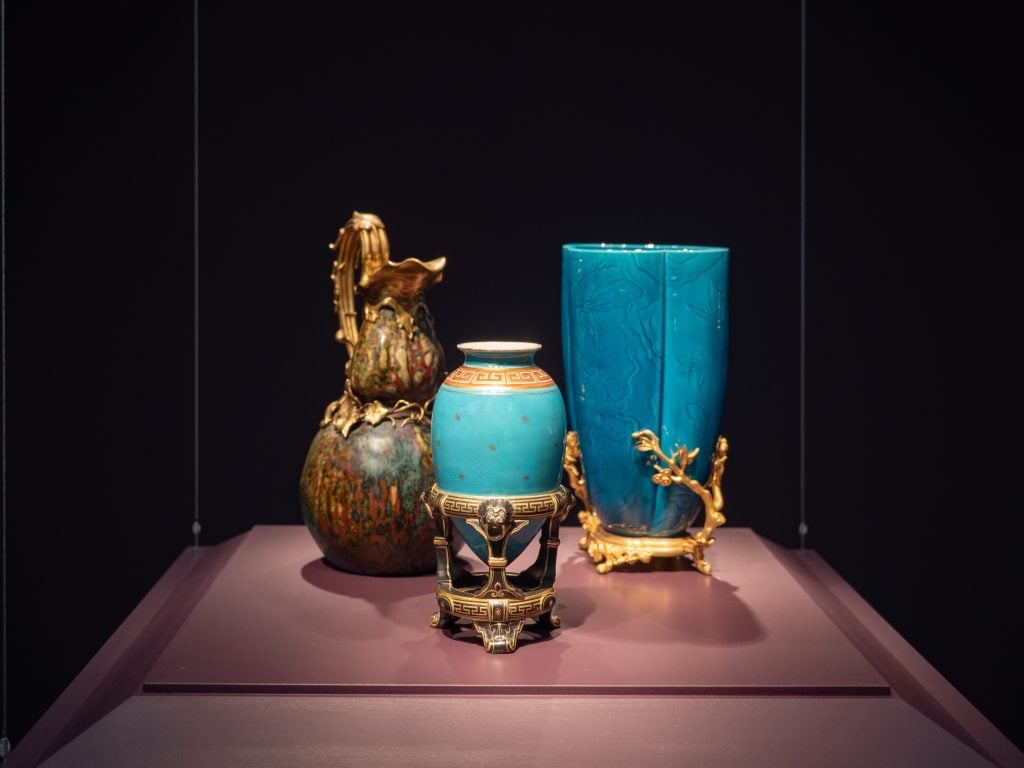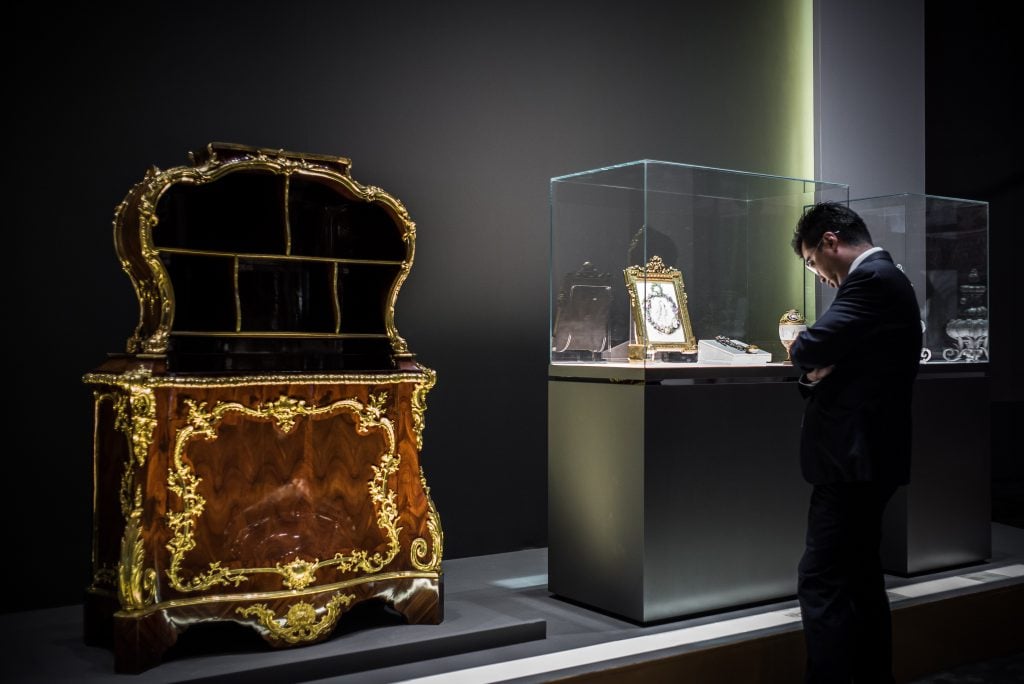Antique art dealers in France have launched a public lobbying campaign against a new European Union (EU) regulation intended to curb imports of illicit cultural objects, notably antiquities, which they say will have a “dramatic and damaging impact” on the EU art market while risking the wrongful criminalization of collectors.
In a heated Paris press conference on February 29—organized by the Syndicat National des Antiquaires (SNA), which lobbies on behalf of some 300 antique and art dealers in France—speakers warned the 2019-approved European Union Regulation (2019/880) imposes “unreasonable and disproportionate” new requirements for importing art, antiquities, and archaeological items originating from outside of the EU. The SNA argues the regulation will result in trade being diverted away from the EU, where France holds the lion’s share of the art market. Additionally, the group says it will become difficult or impossible for individual collectors to donate certain cultural objects to EU museums or move back to the EU with their own collections after having lived abroad.
“In the wake of Brexit, France and the EU have had the opportunity to pass the U.K. as the world’s second-largest market, and there are signs leading toward that. In my view this law will destroy that opportunity,” said Ivan Macquisten, a U.K.-based consultant and advisor to art trade associations, including the SNA, speaking at the conference.
France is currently the fourth largest art market in the world, after the U.S., the U.K., and China, with sales of nearly $5 billion in 2022, according to The Art Market Report 2023 by Art Basel and UBS. It is also a historic hub for dealing in antiques and tribal art and has become the E.U.’s primary art-selling point post-Brexit.

The view of the Eiffel Tower from the Grand Palais Ephèmére, Paris+’s temporary venue. Courtesy of Paris+ par Art Basel.
The new regulation, which comes into effect June 28, 2025, concerns objects made or discovered outside the E.U., such as African, Oceanic, and Pre-Columbian art. It will require owners to obtain a new import license for archaeological items or elements of historical monuments over 250 years old. For a variety of objects over 200 years old and valued at over €18,000 (around $19,500) individually, owners will need a new “importer statement.” This applies to fossils, antiquities, manuscripts, and art.
To get either document, an extensive checklist demonstrating provenance will be required, including an export license, to show an item was not looted from their country of origin. However, critics say such proof can be hard to produce or “non-existent” for items exported decades ago.
“Most of these objects never had a trace,” said Anthony J.P. Meyer, a board member of the SNA and founder of the Galerie Meyer, which deals in Oceanic and Arctic Art. “They’ve been around … [in homes] for years. No one ever requested any form of information, any paper trail, because there was no obligation to do so,” he said.
“It was moral and legal at the time,” he said, adding “today, the mentality has changed, and we are changing with it.”
Meyer reiterated that the SNA and other international trade associations hope to work with officials in Brussels to provide exemptions and amendments to the rules, effectively alleviating the current requirements. Also a member of Cinoa, the Brussels-based international art and antiques dealers’ association, Meyer said that for the past few years, Cinoa has “tried desperately to alert governments and officials [on the issue] but nothing happened.” The SNA also acknowledged their public lobbying efforts have come late, citing a need to understand how the new rules would be implemented and changes to the group’s central mission.
“We’re trying to save all of our jobs, our market, [and] save the possibility for people to appreciate art and to own art,” said Meyer. “The antique market is one of the great purveyors of cultural information and knowledge … If you kill the market, you’re going to kill all of that information and appreciation.”
In addition to estimated additional costs and delays on imports, the law “deems an imported item illicit, unless proven otherwise,” said Macquisten. This translates to a “reversal of the burden of proof,” and breaks existing common property law, which assumes the good faith of the owner, he added.
Indeed, with the new regulations, importers must take legal responsibility for submitted provenance documentation. If it is later shown the object was looted, the importer can be held liable. In the case of an individual collector returning to the E.U. after living abroad, the inability to provide adequate provenance for an object they’ve owned for decades may mean they cannot bring it into the E.U., at the risk of criminal prosecution, according to Macquisten.

Oscar Graf, Frieze Masters 2022. Photo by Michael Adair. Courtesy of Frieze and Michael Adair.
Exceptions are granted for temporary E.U. entry, including objects meant for institutional exhibitions and trade fairs, but dealers said there is no incentive to bring art to a fair if it lacks the required license, because they will not be able to sell it to E.U. clients. Similarly, permanent donations to museums risk falling under the E.U. rules.
Representatives of the European Commission were not able to respond to questions in time for publication, but their website explains the law responds to multiple calls for action, particularly after terrorists attacked cultural sites in Afghanistan, Syria, and elsewhere. It “aims to prevent the illicit trade in cultural goods, in particular when such trade may contribute to the financing of terrorist activities,” states the Commission.
However, speakers at the conference insisted there was no hard evidence of such a terror-financing connection to the art market, and that the extent of the illicit art trade has been exaggerated. They base their claims on reports such as a 2020 RAND study, and a 2022 U.S. Treasury study citing a lack of proof that laundered antiquities finance terror organizations. Additionally, a 2023 report by Donna Yates and Neil Brodie argues there is no factual basis to the often-repeated “factoid” that the illicit antiquities trade is the third-largest in the world, after arms and drugs.
“The fantasy that the art market is financing terrorism doesn’t exist,” said Yves-Bernard Debie, a Belgian art lawyer who represents the SNA, citing research by Macquisten. He claimed the new legislation is founded on “fake news.” He later clarified that illicit art trading “exists, but it’s not an organized crime as with narcotics, or arms trafficking.”
However, as the same, often-sited 2020 RAND study reports, there has been a “well-documented rise in looting at archaeological sites,” despite a “lack of data and evidence” about the size of that criminal activity and its network structure. In December, the Antiquities Trafficking Unit of the New York’s District Attorney Office also stated it has recovered more than 4,700 stolen antiquities, valued at nearly $450 million, and returned more than 4,250 of them to 25 countries since the unit’s creation.
When asked about the new regulation, Alexander Herman, director of the U.K.’s Institute of Art and Law, said he questions to what extent E.U. customs offices will administer the new rules. “I do think the law is quite heavy-handed,” he said in an e-mail. “But the proof will be in the pudding: How the relevant Member State authorities end up applying and enforcing it in practice.”











